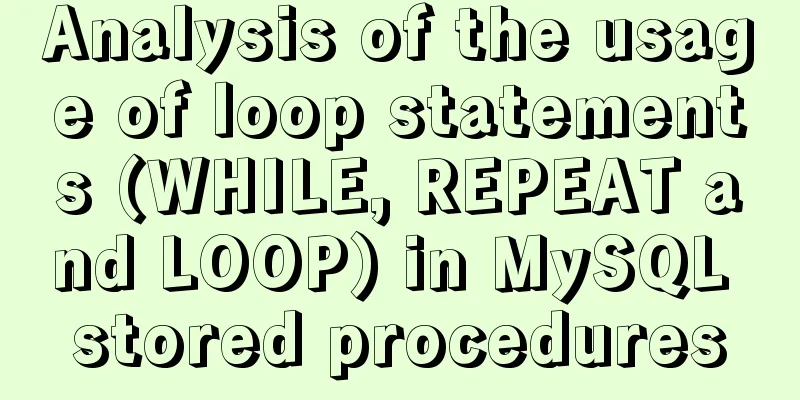When to use Map instead of plain JS objects

1. Map accepts any type of keyAs mentioned before, if the key of an object is not a string or symbol, JS will implicitly convert it to a string. Fortunately, the map key type is no problem const numbersMap = new Map(); numbersMap.set(1, 'one'); numbersMap.set(2, 'two'); [...numbersMap.keys()]; // => [1, 2] 1 and 2 are the keys in numbersMap and the type of these keys (number) remains the same. You can use any key type in an MPA: numbers, booleans, strings, and symbols. const booleansMap = new Map(); booleansMap.set(true, "Yep"); booleansMap.set(false, "Nope"); [...booleansMap.keys()]; // => [true, false] booleansMap uses booleans as keys, no problem. In contrast, Boolean keys do not work in plain objects. Let's break through the imagination: can the entire object be used as the key of the map? The answer is: yes. Objects as keys Suppose you need to store some data associated with an object without attaching that data to the object itself. This is not possible using plain objects. A workaround is to use an array of object-value tuples:
const foo = { name: 'foo' };
const bar = { name: 'bar' };
const kindOfMap = [
[foo, 'Foo related data'],
[bar, 'Bar related data']
]kindOfMap is an array containing pairs of objects and associated values. The biggest problem with this approach is that the complexity of accessing values by key is O(n), and we have to traverse the entire array to get the desired value by key.
function getByKey(kindOfMap, key) {
for (const [k, v] of kindOfMap) {
if (key === k) {
return v;
}
}
return undefined;
}
getByKey(kindOfMap, foo); // => 'Foo related data'WeakMap (a specialized version of Map) does the above without going through all this trouble: it only accepts objects as keys. The main difference between Map and Weakmap is that Weakmap allows the key objects to be garbage collected, thus preventing memory leaks. Well, it is very easy to refactor the above code using WeakMap:
const foo = { name: 'foo' };
const bar = { name: 'bar' };
const mapOfObjects = new WeakMap();
mapOfObjects.set(foo, 'Foo related data');
mapOfObjects.set(bar, 'Bar related data');
mapOfObjects.get(foo); // => 'Foo related data'In contrast to Map, WeakMap only accepts objects as keys and has fewer methods. 2. Map has no restrictions on key namesAny object in JS inherits properties from the prototype object, and so do normal objects. If you override properties inherited from a prototype, you may break code that depends on those prototype properties:
function isPlainObject(value) {
return value.toString() === '[object Object]';
}
const actor = {
name: 'Harrison Ford',
toString: 'Actor: Harrison Ford'
};
// Does not work!
isPlainObject(actor); // TypeError: value.toString is not a functionA property toString defined on an object participant overrides the toString() method inherited from the prototype. This breaks isObject() because it relies on the toString() method. Check the list of properties and methods that ordinary objects inherit from their prototypes, and avoid defining custom properties using those method names. For example, suppose you have a UI for managing some custom fields. Users can add custom fields by specifying a name and value:
It can be convenient to store the state of your custom fields in a plain object:
const userCustomFields = {
'color': 'blue',
'size': 'medium',
'toString': 'A blue box'
};But the user might choose a custom field name, like toString (as in the example), a constructor, etc., which might break our object. Do not use user input values as keys on plain objects. Map does not have this problem, the key value names are not restricted:
function isMap(value) {
return value.toString() === '[object Map]';
}
const actorMap = new Map();
actorMap.set('name', 'Harrison Ford');
actorMap.set('toString', 'Actor: Harrison Ford');
// Works!
isMap(actorMap); // => trueRegardless of the fact that actorMap has a property called toString, the toString() method will work fine. 3. Map is iterableIn order to iterate over the properties of a normal object, you must use other helper static functions, such as Object.keys() or Object.entries():
const colorsHex = {
'white': '#FFFFFF',
'black': '#000000'
};
for (const [color, hex] of Object.entries(colorsHex)) {
console.log(color, hex);
}
// 'white' '#FFFFFF'
// 'black' '#000000'Object.entries(colorsHex) returns an array of key-value pairs extracted from the object. However, map itself is iterable:
const colorsHexMap = new Map();
colorsHexMap.set('white', '#FFFFFF');
colorsHexMap.set('black', '#000000');
for (const [color, hex] of colorsHexMap) {
console.log(color, hex);
}
// 'white' '#FFFFFF'
// 'black' '#000000'colorsHexMap is iterable. You can use it anywhere an iterable is accepted: for() loops, spread operators [...map] . Map provides methods that return iterables: map.keys() to traverse keys, map.values() to traverse values 4. Map sizeAnother problem with plain objects is that you can't immediately tell how many properties it contains.
const exams = {
'John Smith': '10 points',
'Jane Doe': '8 points',
};
Object.keys(exams).length; // => 2To determine the size of exams, one must go through all the keys to determine their number. Map provides a size attribute, which indicates the number of attributes. const examsMap = new Map([ ['John Smith', '10 points'], ['Jane Doe', '8 points'], ]); examsMap.size; // => 2 Determining the number of attributes in a map is even simpler: examsMap.size. The above is the details of when to use Map instead of ordinary JS objects. For more information about JS objects, please pay attention to other related articles on 123WORDPRESS.COM! You may also be interested in:
|
<<: mysql5.7.21.zip installation tutorial
>>: MySQL 5.7.21 winx64 installation and configuration method graphic tutorial
Recommend
How to write the style of CSS3 Tianzi grid list
In many projects, it is necessary to implement th...
Vue realizes the palace grid rotation lottery
Vue implements the palace grid rotation lottery (...
Ubuntu installs multiple versions of CUDA and switches at any time
I will not introduce what CUDA is, but will direc...
CentOS 8 Installation Guide for Zabbix 4.4
Zabbix server environment platform ZABBIX version...
How to deploy Spring Boot using Docker
The development of Docker technology provides a m...
MySQL 5.7.17 zip installation and configuration tutorial Solution to MySQL startup failure
MySQL 5.7.17, now seems to be the latest version,...
Summary of problems that may occur when using JDBC to connect to Mysql database
First, clarify a few concepts: JDBC: Java databas...
Detailed explanation of JS homology strategy and CSRF
Table of contents Overview Same Origin Policy (SO...
Some settings of Div about border and transparency
frame: Style=”border-style:solid;border-width:5px;...
Multiple methods to modify MySQL root password (recommended)
Method 1: Use the SET PASSWORD command MySQL -u r...
Sample code for installing ElasticSearch and Kibana under Docker
1. Introduction Elasticsearch is very popular now...
Deploy Confluence with Docker
1. Environmental requirements 1. Docker 17 and ab...
Basic usage of UNION and UNION ALL in MySQL
In the database, both UNION and UNION ALL keyword...
CSS to achieve the first row and first column of the table fixed and adaptive window example code
Today's campus recruitment written test requi...
Vue implements div wheel zooming in and out
Implement div wheel zooming in and out in Vue pro...










